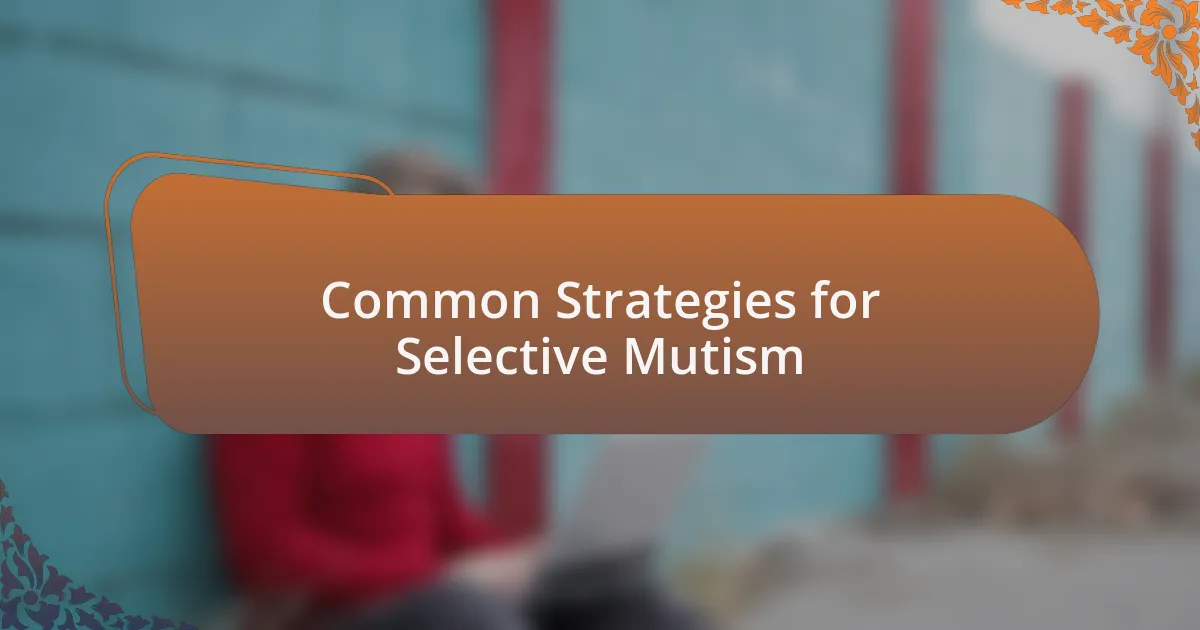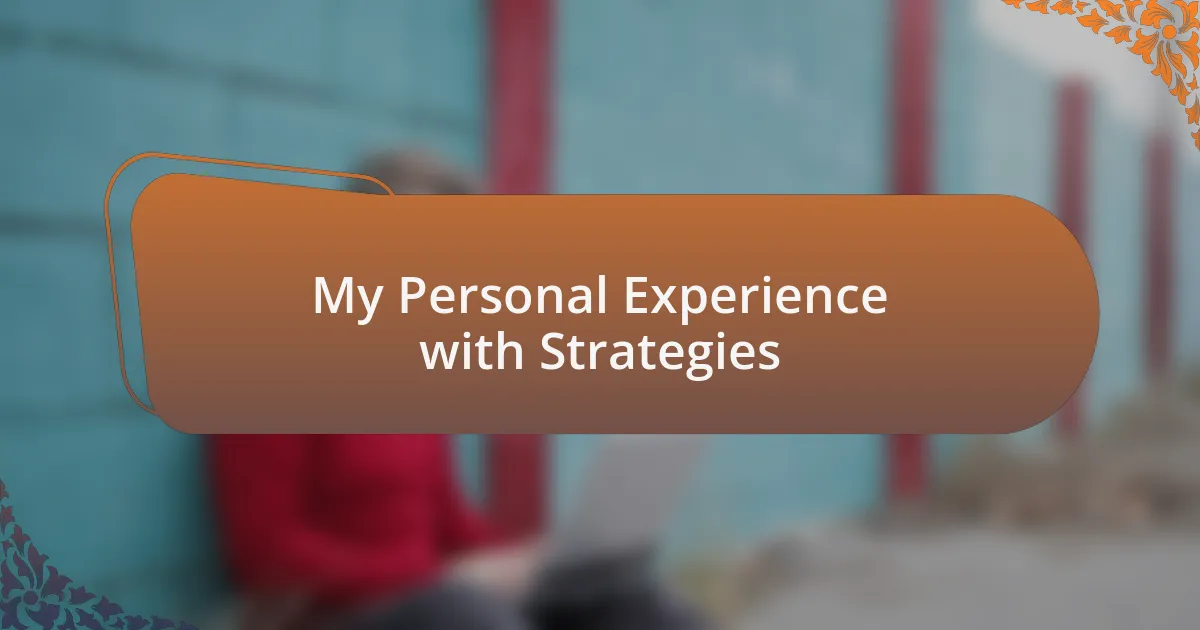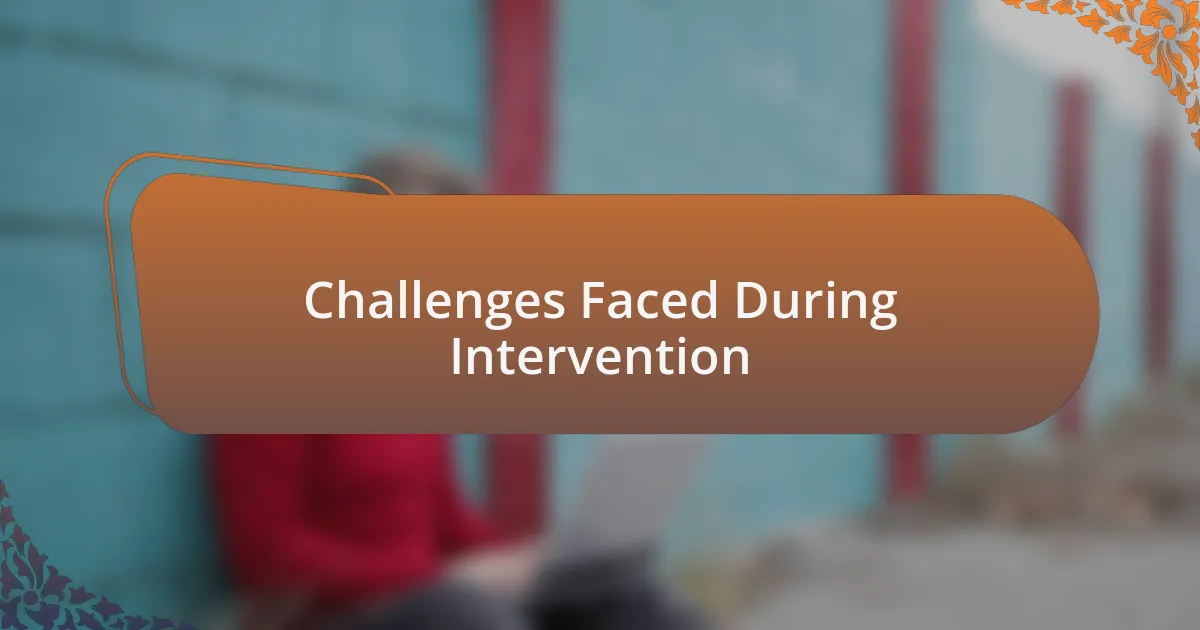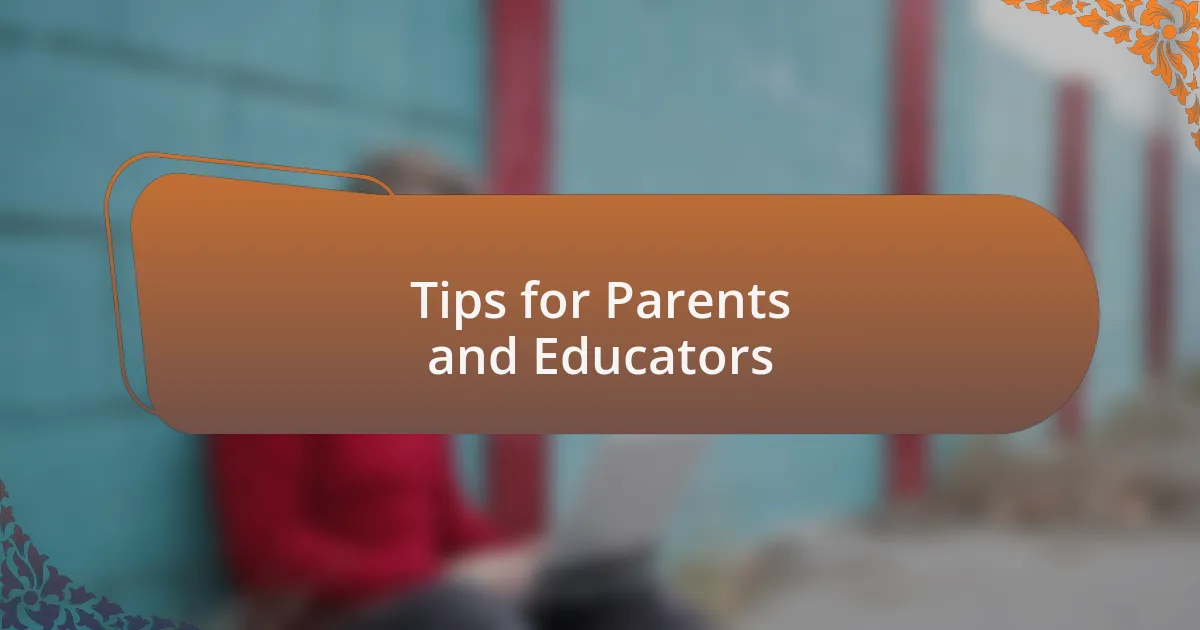Key takeaways:
- Selective mutism is a complex condition often rooted in anxiety, requiring understanding and supportive environments to foster communication.
- Early intervention strategies can significantly improve a child’s ability to communicate, focusing on gradual exposure and building confidence through small successes.
- Creative methods like art, play, and storytelling can effectively help children express their feelings and reduce anxiety in social situations.
- Collaboration between parents and educators is crucial, as celebrating small victories at home reinforces progress and encourages children to open up.

Understanding Selective Mutism Awareness
Understanding Selective Mutism Awareness involves recognizing the profound silence that envelops children who struggle to communicate in certain social situations. I remember the first time I witnessed a child with selective mutism; their eyes darted around the room, filled with emotions that were so vivid yet unsaid. It’s fascinating to think about how many experiences go unheard because of this condition.
Many people may wonder why a child who is chatty at home suddenly clams up in school or at social gatherings. I often felt puzzled by this myself, grappling with the disconnect between a child’s ability to speak freely in one context and their silence in another. It’s essential to understand that this isn’t simply shyness; it’s a complex interplay of anxiety, fear, and social pressures that can leave a child feeling trapped.
As I learned more about selective mutism, I came to realize the importance of creating safe and supportive environments. It was heartwarming to see how small changes, like a gentle introduction to group activities, could encourage those previously silent voices to be heard. Have you ever seen a child light up when they finally feel safe enough to speak? It’s a powerful reminder of the impact awareness can have in bridging this gap.

Definition of Intervention Strategies
Intervention strategies refer to tailored approaches designed to support individuals, particularly children, who struggle with communication due to selective mutism. I recall a time when I observed different strategies being applied in a classroom setting, transforming a child’s reluctance into tentative confidence. These strategies can vary widely, often including gradual exposure to speaking in low-pressure situations, social skills training, and the involvement of supportive adults.
In my experience, effective intervention strategies often focus on encouraging very small steps forward, such as prompting a child to speak to a familiar peer rather than addressing the entire class. I remember how one teacher celebrated every little success, creating an atmosphere where attempts could be made without fear of judgment. It’s remarkable how such an environment can foster a sense of safety, allowing children to express themselves at their own pace.
Overall, the essence of these strategies lies in their ability to meet each child’s unique needs and challenges, tapping into their inner strengths. Have you ever seen a child, who once stood mute in a corner, find their voice amidst supportive peers? It’s a profound reminder that with patience and the right strategies, breakthroughs are not just possible; they are inevitable.

Importance of Early Intervention
Early intervention is crucial for children experiencing selective mutism because it lays the foundation for effective communication skills. I remember a young girl in my neighborhood who rarely spoke at school, but after her parents sought help early on, she blossomed through committed interventions. Seeing her progress reinforced my belief that the sooner you provide support and strategies, the more likely positive outcomes become.
When intervention happens early, it fosters a supportive environment where children can safely explore communication. I once volunteered at a summer camp, where we employed simple, playful activities to encourage vocalization. Observing children engaging and laughing together was heartwarming, and it made me wonder: how much potential might be unlocked when kids don’t feel pressured but rather are gently guided to express themselves?
Moreover, early intervention not only empowers children but also eases the worries of their families. I often hear parents voice their concerns about their child’s silence, which can lead to feelings of frustration and isolation. It’s essential to remind them that with timely strategies in place, they can witness their child emerge from their shell, leading to a more confident and connected life. Isn’t it amazing how a proactive approach can change a child’s trajectory forever?

Common Strategies for Selective Mutism
Common strategies for helping children with selective mutism often include gradual exposure and creating a safe space for communication. I remember working with a child who would only speak to his mother at home. By slowly introducing him to a small group of peers, allowing him to be silent at first, we noticed that just being surrounded by friendly faces eventually encouraged him to whisper a few words. It’s fascinating how a little encouragement in a non-threatening environment can spark change.
Another effective method I’ve seen is the use of role-playing and storytelling. During a therapy session, I suggested acting out a favorite story, providing the child an opportunity to step into various characters. As we immersed ourselves in the tale, I noticed her anxiety melt away, replaced by laughter and shared enjoyment. It made me think: how powerful is the magic of storytelling in bridging the gap between silence and self-expression?
Reinforcement is also key. Celebrating small victories, like a child responding with a simple “yes” or “no,” can boost their confidence significantly. I recall a parent who would create a reward system for her child, where every small step toward speaking was recognized with stickers. The joy on her child’s face after collecting enough stickers to earn a special treat was incredibly rewarding to witness. Isn’t it remarkable how simple acknowledgments can transform fear into excitement?

My Personal Experience with Strategies
One strategy that stood out for me involved the use of art as a medium for expression. I once guided a child who was reluctant to speak by allowing him to draw his emotions instead. During one session, while he sketched a colorful scene of a park, I saw his eyes light up. It made me wonder how a colorful canvas could communicate feelings that words couldn’t yet express.
I also discovered the importance of routine in creating a sense of security. With another child, we established a predictable schedule for our meetings, and each time, I noticed his body language relaxing a little more. It’s interesting how when children know what to expect, they begin to open up, gradually shedding their anxieties.
Sometimes, simple conversations in a familiar setting can make a world of difference. I remember a moment when I casually chatted with a child about her favorite TV show while we played a game. I could feel the initial tension dissolve as she joined in, offering her opinions animatedly. Isn’t it amazing how comfortable surroundings and shared interests can enable communication and crack the walls of silence?

Challenges Faced During Intervention
During my journey with intervention strategies, I encountered significant challenges that tested my patience and creativity. One memorable instance involved a child who froze at the mere thought of speaking in a group. I remember the heavy silence that filled the room as I tried to encourage him. It made me question whether I was pushing too hard. How do you encourage communication without making it feel like a demand?
I also faced hurdles related to the child’s environments outside our sessions. One weekend, a parent shared with me that the child was overwhelmed with noise at home, making it even harder for him to engage in our sessions. It struck me how external pressures often aggravated their struggles. It left me pondering how much our environment really influences our ability to connect with others—especially for those already facing challenges like selective mutism.
The emotional toll on both the child and myself was another challenge I didn’t anticipate. I vividly recall an instance where I felt a wave of frustration when a child simply wouldn’t respond, despite my efforts. It’s disheartening to witness someone wanting to communicate but feeling trapped by their own silence. This made me realize that cultivating patience and resilience is an essential part of the process, not just for the child, but for the facilitator as well. How do we balance our hopes with the reality of each child’s individual journey?

Tips for Parents and Educators
When working with children who have selective mutism, I’ve found that creating a safe and supportive environment is paramount. One strategy that worked for me was establishing consistent routines. I remember a classroom where we began each day with a familiar greeting ritual. This simple act made the children feel more at ease, gradually encouraging them to express themselves when they were ready. Isn’t it fascinating how a little structure can go such a long way in building confidence?
Another effective approach I discovered was to engage children through play. I recall a moment when I introduced a game that involved taking turns whispering silly secrets. The laughter that erupted during this activity was infectious. It reminded me that communication doesn’t always have to be serious; it can flourish in informal settings. Have you ever noticed how children can become more expressive when they’re simply having fun?
Moreover, collaboration with parents can make all the difference in supporting a child’s progress. I often encouraged parents to share small victories at home, whether it was a child saying one word or participating in a family dinner discussion. Each success, no matter how small, became a building block for our sessions. What better way to reinforce progress than to celebrate these milestones together? It’s a reminder that we’re all in this journey together.